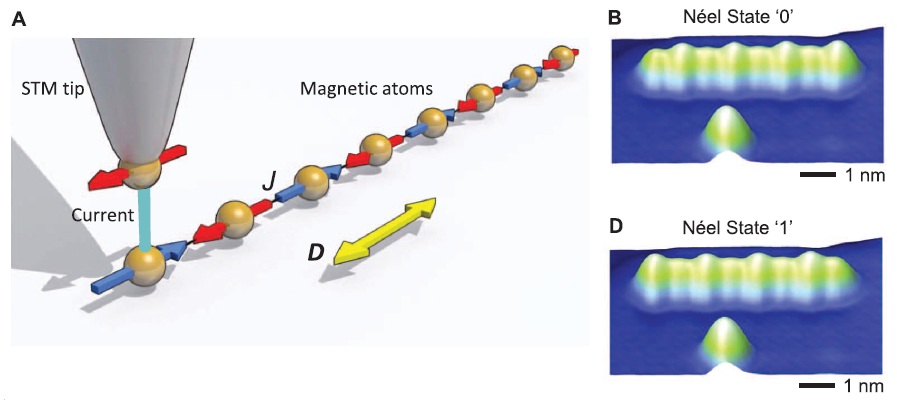
Information stored by a chain of magnetic atoms. Left: an STM tip measures the magnetic state of the iron atoms. Right: through increasing the current between tip and atoms the magnetic states can be switched. Peaks become valleys and vice versa. (c) Science Magazine
I now finally got the time to follow-up on last week’s paper in Science by Andreas Heinrich‘s group at IBM on magnetic storage elements that are only a few atoms in size. There have been a few misconceptions in some of the news reports with some being plainly wrong (‘smallest storage device ever made’), and many didn’t mention much about the scientific principles behind this study, although these are quite interesting. One of the better reports appeared in the New York Times, albeit again without going much into details. So I hope I can still add something useful with this blog post.
And actually, we’ve come across Andreas Heinrich’s previous research before, he does very innovative research with scanning tunneling microscopes (STM). In this latest Science paper he has now explored the limits of magnetic storage devices. Magnetism is of course the basis for storage such as magnetic hard drives. The problem in increasing the storage density in any magnetic storage device is that the magnetic regions begin to interfere with each other as they become smaller and are integrated closer together, because magnetic states on the order of just a couple of atoms are not very stable. […]


January 15, 2012
3 Comments